The story of Gunder and Mari
Have you ever wondered how all the Norwegians ended up in America? It can be hard to imagine, but in the 19th century, Norway was a very poor country.
The country had too many inhabitants and too few resources. The families were big and the farms were small. Too small to feed the families as they grew larger and larger. The story of Gunder and Mari is the story of one of these families that grew too big to fit in their very small farm.
By Lise Christin Walla, an ancestor hunter since 2003
Gunder was born on a farm named Fonstad in Gausdal in 1810. He married Mari in June 1842. Mari was born in 1818 on a nearby farm named Syverrud. Only a month after the wedding, their daughter Helene was born. Therefore the little family was in a hurry to find a place to settle down. Gunder had 9 siblings and was the seventh child in the family. He had three older brothers, and like many other youngsters in the area, that meant he had no farm to inherit from his father. So where could they stay? They couldn’t find a place anywhere…
Then Gunder and Mari heard of the land up north, in northern Norway, the so called “Nordlandene”. They heard that this area could provide enough food for everyone, more work and more ways to earn for a living. And they heard that this place would have large areas of land, just laying there – waiting for new owners. They had to think long and hard, but Gunder and Mari decided they would give it a try. And they went, with no other transport than their own feet and a small trolley to hold their belongings. They had to take turns to carry their little daughter Helene on their backs, because this was a long journey.
The journey up north
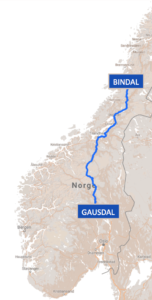
Gunder and Mari were now 33 and 25 years old. You can see the journey they took from Gausdal to Bindal on the map. The map shows a journey with a total distance of 600 km, but this map was made based on the roads available today. Back in those days, the roads curved around almost every farm on their way, making their journey longer by far.
Unfortunately, I do not not know much about their journey, and how they managed. To keep their expenses on a low level, they probably asked farmers on their way to let them sleep in the barn. In return, they could offer to help out on the farms for a few days. In this way, the journey could take weeks.
Several people from Gausdal went up north. Some had started their journey a few years earlier, and many of them had already found work and a place to settle down.
When Gunder and Mari reached Nord-Trøndelag, this area was starting to fill up with people from the southern Norway. Gunder and Mari had to walk even further, to Bindal in Nordland. And on the farm Hall they found their new home.
Hall and Årsand
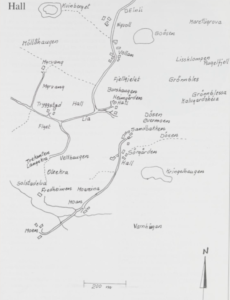
The farm Hall is one of the oldest farms in Bindal area and used to be owned by the crown. The farm consisted of several smaller places as you can see on the hand drawing. Gunder and Mari stayed at Hall for a couple of years. During this time, in 1844, they had their second child, a boy named Peder. The family moved on to a farm a bit further south, Årsand, in Fjølvika in Kolvereid. This farm was owned by Sverdrup. They stayed there for four years and had a second boy, Ole, in 1846.
Big environmental change
Moving to this area was a huge environmental change for Gunder and Mari. In Gausdal they lived in an open valley, surrounded by mountains, not far from Lillehammer. You are perhaps familiar with the home of the Olympic winter games in 1994? Then you know that this area means tons of snow and very cold winters. The summers are, on the other hand, relatively warm. Their new home was very different from that, placed in the costal area of Norway. It would mean very little snow during the winters. And shorter and darker days for a much longer period. During summer it would be impossible to sleep because of the midnight sun. And the summers would never be as long and warm as back home.
Mari, in particular, started to long for her family, and she missed everything they had left behind. The memories of Gausdal grew stronger every day. And the life up north was not as they had dreamed of. They suffered from little food, few resources and every day was a struggle filled with hard work on the farm. Way too often they saw their neighbors die from diseases, poverty and the lack of food. Fishing was also a high risk profession, many fishermen died at sea, leaving their wife and children without support. So in 1849 they decided to go back home again.
Going home
On their way back to Gausdal, something very unexpected happened when they arrived in Trondheim. Mari was pregnant with their fourth child, and suddenly their little girl Edrikka was born there on July 27th. Trondheim would be a large city to Gunder and Mari, and without any family or friends, they had to find a way to arrange for a home christening. We can only try to imagine how challenging the rest of the journey must have been with the four children, ranging from seven years to a newborn child. The church book for Gausdal shows that Edrikka was christened in Gausdal on September 16th. This probably means that they used about 1,5 month on the way from Trondheim to Gausdal.
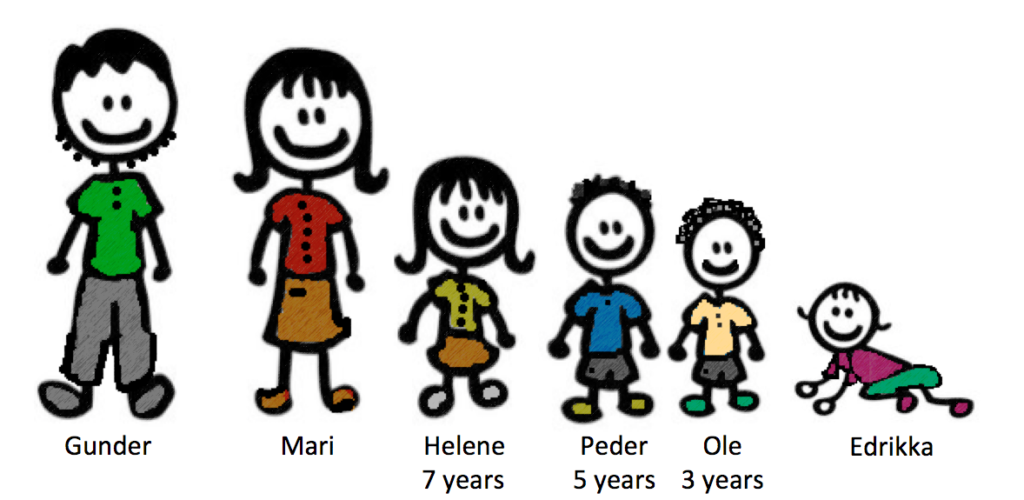
Home is no home
Returning home to Gausdal, Gunder and Mari found a small place to live at the farm Brandsli-Stokket. This was not what they had planned, nor expected. They had seen themselves living on the farm with Gunder’s parents – and perhaps – on the long run, inherit a bit of land from the family farm. Gunder’s father was now 77 years old, and his mother was 74. His mother’s health conditions was not good, and she could not manage without help from one of her daughters. Further on, two of Gunder’s brothers suffered from chronic illness and had to stay at home, totally dependent on support from their parents.
Another brother, with wife and five children at the time, also stayed at the farm with their parents. This brother was a watchmaker, but his income was not enough to support his family. Therefore they too had to get help from his parents. Finally, Gunder’s brother Kristen, had a small croft on the farm where he stayed with his wife and children. This place was too small to feed the whole family, so they were dependent of their parents as well. As you can see from the illustration, 16 people were living on the farm Fonstad.
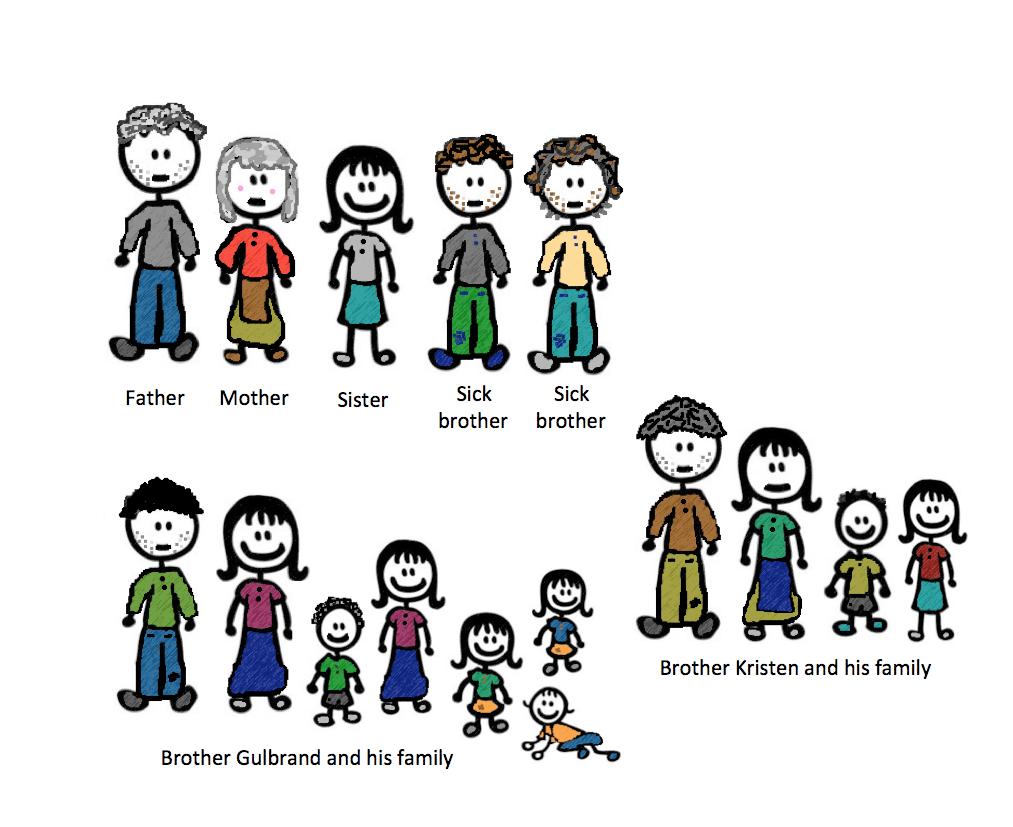
Help from the poor commission
Gunder’s father probably had to make the toughest decision ever, when he wrote to the minister in Gausdal, saying that he was not able to support Gunder and his family. If he gave Gunder the support he needed, it would be impossible for him to support all the other members of his family. Gunder’s father then sent a list to the minister showing that despite his financial problems, he had provided Gunder’s family with new shirts and trousers. He also gave them new shoes, fabrics, a bed and chairs. And from his farm he had supported them with grain, flour, milk and other groceries. Despite of this significant contribution, the money Gunder made working as a laborer, wasn’t enough to feed his family. Gunder had to go to the poor commission and ask for help.
The poor commission directly sent a claim up north to Kolvereid, which still was registered as the home for Gunder and Mari and their family. And since Gausdal was too crowded at the moment, they also asked Kolvereid to take the family back to give them the necessary support. This must have been devastating for Gunder and Mari. Gausdal was were they belonged! Could this really happen to them?
Gunder wrote a letter to the parish priest in Gausdal, in the kindest way begging the church to help them out. He tried to argue that the economical situation soon probably would have to change to the better for the region. But for no use. The family had to see themselves forced to go back to Kolvereid again.
Forced back to Kolvereid
The family stayed in Gausdal for almost three years before they were forced to return to Kolvereid. The church book records show that on August 2nd 1852, the family left Gausdal. Now they were five children, including the youngest, a little boy called Mathias, born in May the same year. The transportation was just as simple as the other two times, they went by foot, with their few belongings on the trolley.
What is really interesting, is that the poor commission had asked Gunder to set up a budget for the journey. Gunder estimated that they would use 16 days. That included three days in Trondheim, and to continue from there on a steamer. Gunder’s final estimate for the whole journey was 16 spesidaler (64 kroner, or 658 USD in today’s value). The poor commission thought this was too low though, and gave them 20 spesidaler (80 kroner, or 822 USD in today’s value) to cover the expenses for the journey.
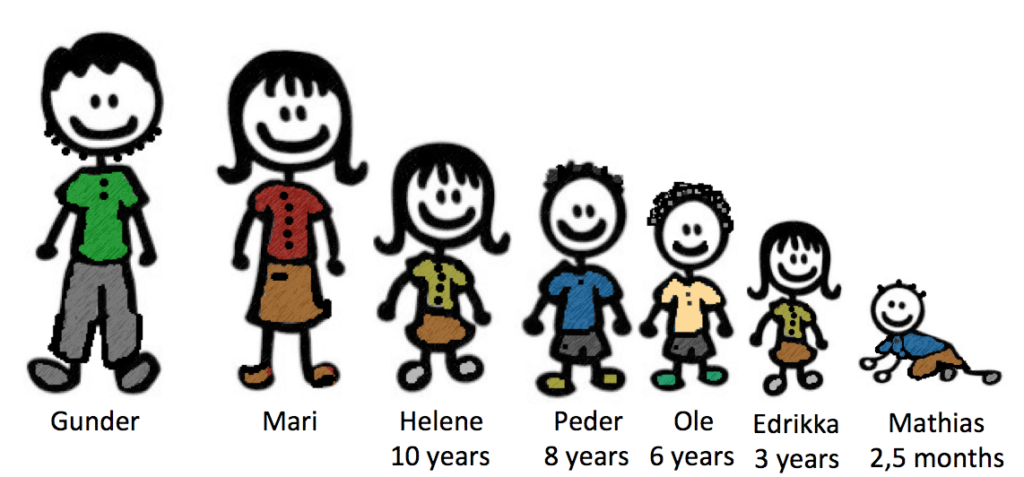
Gunnarplassen in Horvereid
Back in Kolvereid, Gunder and Mari and their five children stayed for a while at a farm owned by Jørgen Pedersen Mulstad. In 1854 they finally got their own croft, by the river in Dalen, known as Gunnarplassen in Horvereid. A year later, in 1855 little Gine Kristine was born. Although they had their own place, the family of eight had to struggle every single day to support themselves. In Kolvereid this came to be the place where they were known to manage on very little. The story says that in spite of the lack of resources and the fight against poverty, the family were knowledgeable, strong and respected people. And they contributed to the small community in the village, being good neighbors. So even though they were poor, they were rich in mind.
The 1865 census documents the story and the situation at the farm. Gunder was now 55 years old and Mari was 47. They had 4 sheep and 8 goats. No horses to help with the heavy work at the farm, and no cows and pigs. The outcome of the farm was 1/16 barrel of barley, 1/8 barrel of wheat and 2 barrels of potatoes. Helene, Ole and Gine Kristine still lived with their parents to help out on the farm. Mathias, only 13 years old, had been sent out to another farm in Kolvereid and worked as a laborer. Edrikka, 16 years old, lived and worked as a maid at a farm in Nærøy. Peder, 21 years old, supported himself working as a fisherman in Laugen in Nærøy.
Death came too early
The next year, in 1866, both Helene and Peder got married, and in 1871 it was Edrikka’s turn. That must have been good happenings for the family. But the next year, on May 27th 1872, when Mari was 54 years old, she passed away. We find no cause of death in the church book, but we can assume that living this hard life would itself be the reason for her early death. Three years later, in 1875, Ole died, only 29 years old. He left a wife and three children. His children’s health couldn’t have been too good either, because they all died at age 19, 22 and 23. Ole also had a son that died in 1868, just four months old. Helene died in 1881, 38 years old.
In all this misery, could there be a better life somewhere else?
Better off in America
The answer was America. Over 800.000 Norwegians gave up their miserable life in Norway for a new start in America. On May 3rd 1881 Mathias went onboard on the steamship Tasso. He was going to Sioux City in Iowa. His wife and 5 children followed him in October the same year. The records show that they went to Canton in Dakota and travelled with the steamship Herø. The price for the tickets were 89,88 kroner each.
.jpg)
Even Gunder decided to go to America. On May 16th 1888, nearly 78 years old, he went to Canton, probably to stay with Mathias. He travelled with the same steamship Herø. The price was now up to 298 kroner and was payed for in the United States.
In 1893 Peder, now the owner of the farm Laugen, sold his farm and decided to follow in the footsteps of his brother and father and head to America. He went together with his wife and four children from Trondheim, with the ship Tasso. The destination was Baldwin in Wisconsin. In the 1900 census they are listed in St Croix in Wisconsin, and they still lived there in 1920. In 1900 Peder was a farmer owning his own land, and his son Ole was a farm laborer. Eventually Ole took over this farm and married Nanna from Norway.
Would you like to know more about Gunder and Mari? Or do you need help tracing your Norwegian ancestors? I am sure Martin will provide you with my contact information.

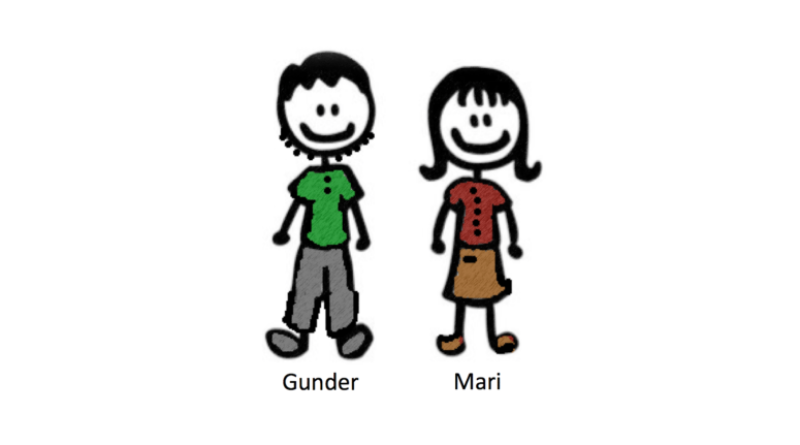

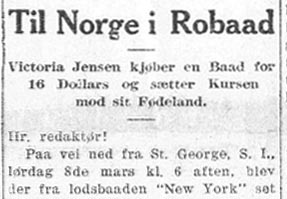
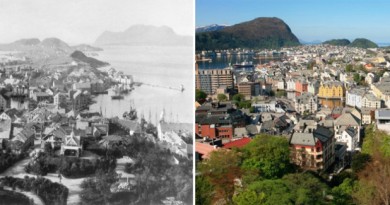
Totally interesting!
I am so glad you liked it! Thank you very much, Carolyn!
The experiences of Gunder and Mari in the story appear to be similar to that of my ancestors. My great-grandfather and grandfather came from the Bindal area. They were poor and did not own any property. I also know that some of my ancestors were so poor they had to accept assistance. Your excellent article has given me a much better picture of what it was like living in Norway at that time and why so many Norwegians left for America and Canada
Thank you
Thank you so much for your comment, Derwyn! I hope your ancestors found a better life in America!
For some reason, I knew only that there was not enough land for the people to farm. It did not dawn on me the beginning paragraph of this story…how over populated they were and of course “not enough land” which makes sense. I just never knew that part of being over populated and a poor country. Their ordeal of traveling via foot and ship with all the children must have been very testy.
I would like to find more information about my great-grandparents from Norway. I have photos of them, which were taken shortly after they married in Norway and before coming to America. I know nothing much of their parent’s life, but maybe just names of their parent’s. Then, I get so involved in the searching and searching without knowing much about how everything works, that I neglect all of my other chores. After all of that, I still found nothing except the town in which they were married.
Why are the Norwegians so complicated? I’d love to locate family over there. My grandmother came to America when she was about 4-6 years old. Again, I know nothing significant about her family that may remain over there. I have a location of the farm. I’d like to see family trees on both my great grandparents and my grandmother that would go WAY BACK to the Vikings if possible.
Thank you very much for the comment! You are lucky to have photos of your ancestors, many people dont. I will write you an e-mail later, perhaps I can help you trace your ancestors? I would love to help!
i love this! My great-great grandmother, Elisabeth Johnsdatter Hall also came from Hall in Bindal to Canton, SD. Thank you for some of the “story” surrounding this time in Norway.
Thank you so much, Kristen! I am glad you liked the story! It is really interesting that your great-great-grandmother came from the very same farm! It’s a small world, isn’t it?
I enjoyed the story of Gunder & Mari. My dad, Lars, his parents & 7 brothers & one sister came from Norway, near Rullestad. I have lots of information about where they grew up. They came over in the late 1800’s.
Hello Maxine. Thanks for visiting! You are right; Lise Christin’s story is intriguing. If you would like to share the story about your ancestors in a similar way as Lise Christin has done, I am happy to publish it on this blog.